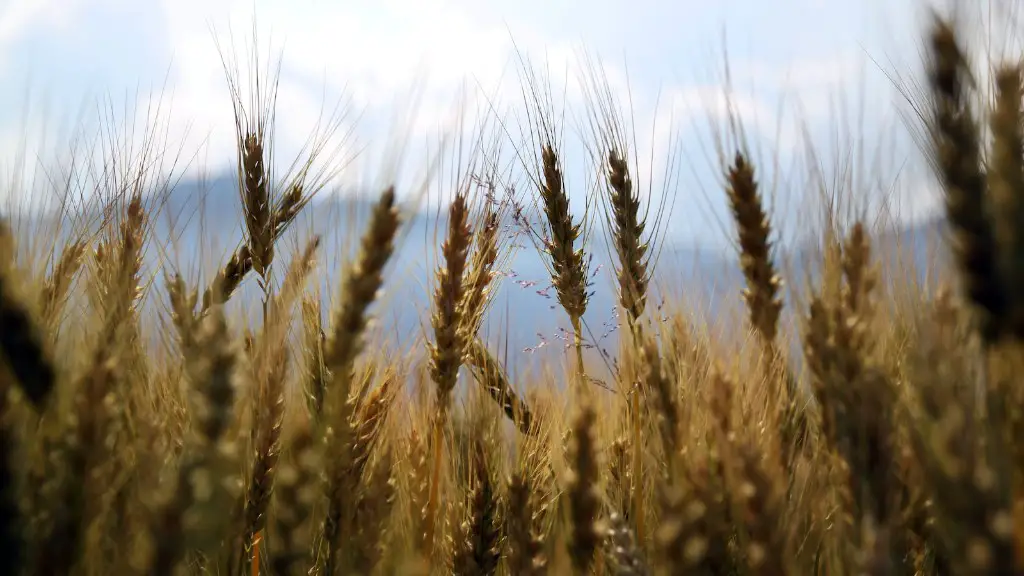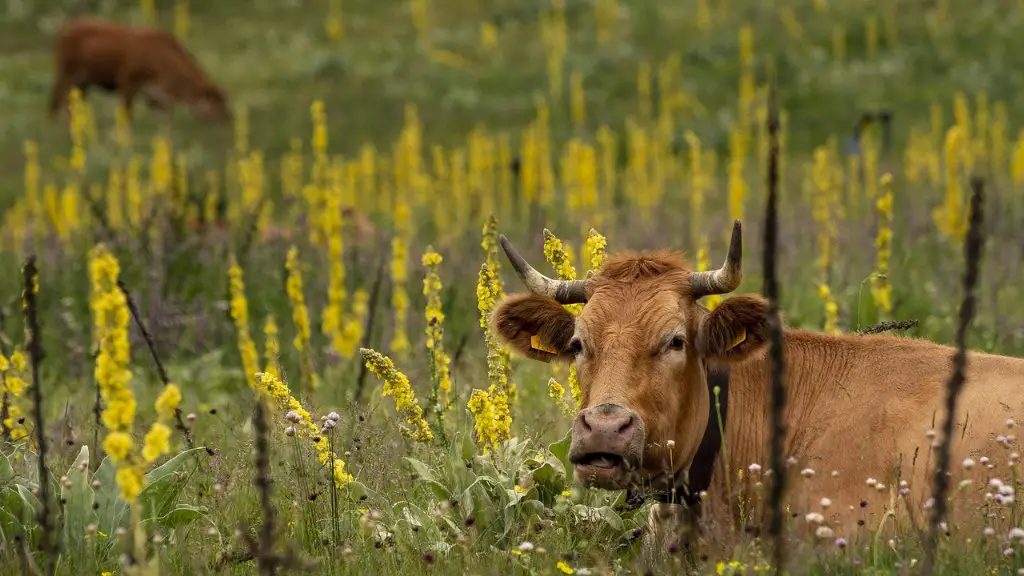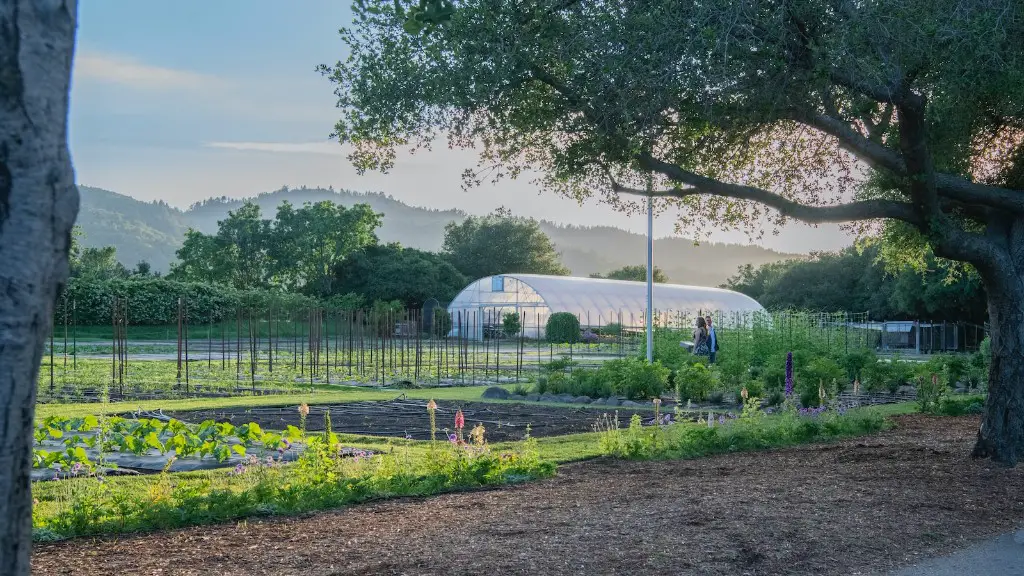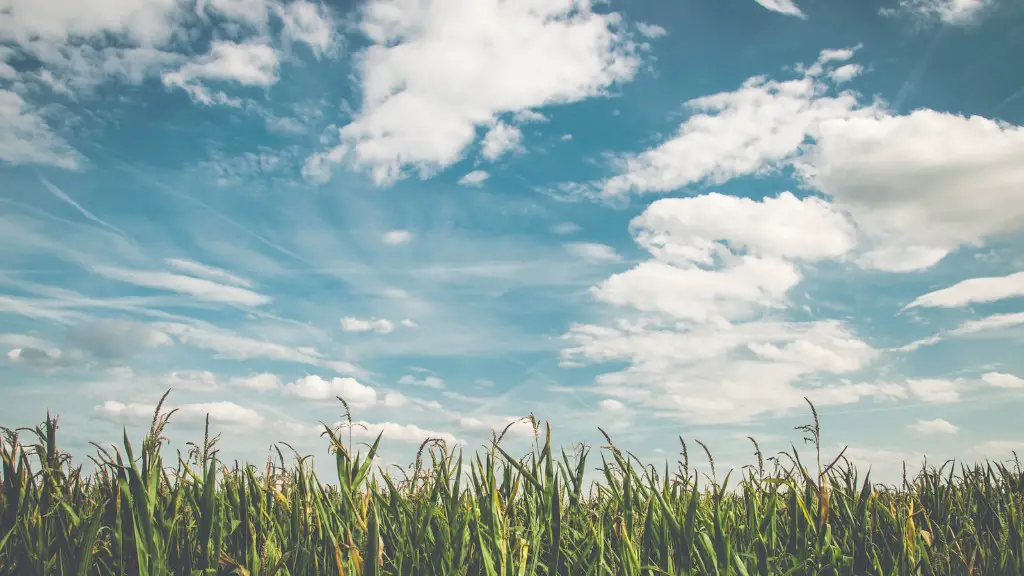Agriculture is believed to have first developed in the Fertile Crescent, which is a region in the Middle East that includes parts of modern-day Turkey, Iraq, Iran, Syria, and Lebanon. This area is thought to be where crops were first domesticated, and it is thought that early farming methods were developed here. The Fertile Crescent is also thought to be where livestock were first domesticated, and it is thought that early methods of animal husbandry were developed here.
The first instances of agriculture appeared in the Fertile Crescent around 10,000 BCE. It is here that the first evidence of the domestication of plants and animals can be found. Agriculture allowed for the formation of civilizations and the growth of cities. It also allowed for the growth of food surpluses, which allowed for the development of trade and commerce.
When where and why did agriculture first develop?
Domesticity allowed for the development of agricultural communities approximately 10,000 years ago when humans began to domesticate plants and animals. By establishing domesticity, families and larger groups were able to build communities and transition from a nomadic hunter-gatherer lifestyle dependent on foraging and hunting for survival. Agricultural communities allowed for the growth and development of civilizations and the advancement of human knowledge and technology.
The Egyptians were among the first peoples to practice agriculture on a large scale, starting in the pre-dynastic period from the end of the Paleolithic into the Neolithic, between around 10,000 BC and 4000 BC This was made possible with the development of basin irrigation. The Egyptians used a variety of irrigation methods, including basins, canals, and ditches, to bring water to their crops.
The development of agriculture allowed the Egyptians to support a large population, and by 3000 BC they had one of the largest populations in the world. Agriculture also allowed for the development of other industries, such as pottery and weaving, which led to the development of a thriving economy.
The Egyptians were able to create a prosperous civilization thanks to their ingenuity and hard work. Their achievements in agriculture, engineering, and architecture have left a lasting legacy that continues to influence the world today.
Where did agriculture first develop in the Americas
The early history of plant domestication in the Americas is largely known from microfossil evidence. Agriculture led to landscape transformations in the Americas, the scale of which varied across time and place. The earliest evidence for plant domestication in the Americas comes from lower Central America and northwestern South America. These regions were the first to be settled by humans, and they were also the regions with the greatest diversity of plants.
The Neolithic Revolution was a major turning point in human history, marking the transition from a hunter-gatherer lifestyle to one based on agriculture. This transition allowed for the development of civilizations and the growth of cities. The Neolithic Revolution began around 10,000 BC in the Fertile Crescent, a boomerang-shaped region of the Middle East where humans first took up farming. Shortly after, Stone Age humans in other parts of the world also began to practice agriculture. The Neolithic Revolution had a profound impact on human societies, ushering in an era of growth and prosperity.
When did agriculture start in Mesopotamia?
The regular flooding along the Tigris and the Euphrates made the land around them especially fertile and ideal for growing crops for food. This made it a prime spot for the Neolithic Revolution, also called the Agricultural Revolution, that began to take place almost 12,000 years ago. The Neolithic Revolution was a period of time when humans began to transition from a hunter-gatherer lifestyle to a more settled, agrarian lifestyle. This transition led to the development of agriculture, which allowed for the domestication of plants and animals. The Neolithic Revolution had a profound impact on the human way of life, and it is considered to be one of the most important events in human history.
The earliest agriculture took place in the Near East and it is thought that barley was the first crop to be domesticated. This was soon followed by wheat, barley, peas, lentils and vetch. At the same time, dogs, goats and sheep were domesticated.
When did agriculture develop in Mexico and Andes?
Around 7,000 years ago, agriculture emerged in Mesoamerica, including the domestication of maize, beans, and squash, causing major changes in the plants that people cultivated. Three sisters agriculture (maize, beans, and squash planted together) had spread across Mexico by 3,500 years ago, though they originated at different times. This type of agriculture allowed for a more efficient use of land and resources, and helped to support a growing population.
Agriculture is one of the oldest human activities and developed independently in different parts of the world. The first areas where agriculture developed were the Middle East, Egypt, India, China, and Mexico. From there, it spread to larger parts of Asia, Europe, Africa, and the Americas. Agriculture has played a key role in human society and has allowed for the development of civilizations.
When and where was agriculture first recorded
Recently, however, archaeologists have discovered that farming was actually first developed in an area known as the Fertile Crescent, which is located in modern-day Turkey. This discovery has led researchers to believe that farming was actually “invented” some 10,000 years ago, which is about 2,000 years earlier than previously thought.
This new discovery has implications for our understanding of human history and the development of civilization. It suggests that the first farmers were actually much more sophisticated than we previously thought, and that the Fertile Crescent was an important center of early human activity.
Further research into the origins of farming in the Fertile Crescent will continue to shed new light on our understanding of human history.
Agrarian civilizations first began developing around 3200 BCE in Mesopotamia, Egypt, and Nubia. These early agrarian societies were some of the first to develop irrigation and other methods of farm management, which allowed for more efficient food production. These civilizations also created early writing systems, which were used to record farming methods and other aspects of daily life. The first agrarian civilizations were an important step in the development of human civilization as a whole.
When did the 1st Agricultural Revolution start?
The Neolithic Revolution is regarded as one of the most important events in human history. It marked the transition from a lifestyle of hunting and gathering to one of agriculture and settlements. This change had a profound impact on societies, providing a more reliable food supply and leading to population growth and the rise of civilizations.
The land in Mesopotamia was ideal for farming because of the fertile silt. The first farm settlements formed in Mesopotamia as early as 7000 BC. The farmers grew wheat, barley, and other types of grain. The livestock, birds, and fish were also good sources of food.
Did Mesopotamia invent farming
The Fertile Crescent is a historical region in the Middle East that includes the lands around the Levant and Mesopotamia. It is considered to be the birthplace of agriculture due to the early Evidence of agriculture has been found in the Levant and it is thought to have spread to Mesopotamia from here. The Fertile Crescent was an important region for the development of large-scale cities and empires.
Mesopotamia was a region located in the eastern Mediterranean that is now modern-day Iraq. It was here that some of the world’s earliest civilizations developed, including the Sumerians, Akkadians, Babylonians, and Assyrians. These cultures were responsible for many inventions and innovations that have shaped our world today. Writing, math, medicine, libraries, road networks, domesticated animals, spoked wheels, the zodiac, astronomy, looms, plows, the legal system, and even beer making and counting in 60s are just a few of the concepts and ideas invented in Mesopotamia.
When did agriculture develop in the Americas?
It is amazing to think that agriculture began in both North and South America independently and so long ago! Agriculture has clearly played a key role in the development of human civilization.
The Maya have a long and rich history of agriculture, dating back to 2500 BC. They have cultivated a variety of crops over the years, including maize (corn), squash, beans, tobacco, and cocoa. This transition to an agricultural lifestyle marks a significant change from their earlier, nomadic ways. The Maya have been able to adapt and thrive in this new way of life, thanks to their hard work and resourcefulness.
Final Words
The first known instance of agriculture occurred in the Fertile Crescent in the Middle East.
There are many theories about where agriculture first developed, but the most likely place is in the Fertile Crescent of the Middle East. Agriculture allowed for the domestication of plants and animals, which led to the development of civilizations. Agriculture allowed for the growth of cities and the rise of civilizations.





